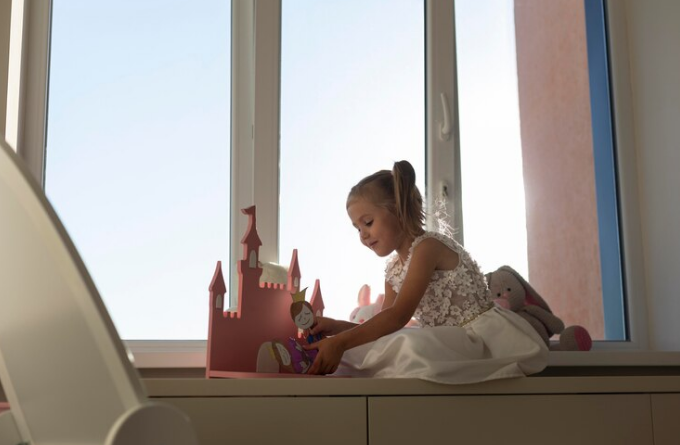Introduction
Every home should prioritize the protection of its children since, as they get older, their curiosity may push them to explore potentially hazardous areas. Windows pose one such concern, especially those with screens that might not be made to keep kids from slipping out. The purpose of this post is to discuss the important subject of child-proofing window screens and provide helpful tips and solutions to protect little adventurers.
Making sure our children’s environment is as secure as possible is essential as they grow and explore their surroundings. Window screens are one frequently disregarded part of child safety. These screens work well to keep pests out, but they aren’t made to stop a kid from slipping out of the window. This post examines useful and necessary techniques for childproofing window screens to protect our little ones.
Recognizing the Hazards
A remarkable frequency of accidents between youngsters and windows has been reported in recent statistics. Standard window screens don’t provide much fall protection, despite popular perception. They are not meant to support a child’s weight; rather, they are meant to keep insects out. In-depth analysis of these figures and dispelling of widespread myths regarding the security of window screens are provided in this section.
Many child-window accidents are reported each year, with many resulting in catastrophic injuries. Standard window screens’ main weakness is that they can’t support a child’s weight when they lean against them. As these mishaps can happen discreetly and rapidly, it is imperative that parents recognize the hazards and take preventative action.
Evaluating Your Requirements
In order to childproof your home, you must first evaluate it. Examine every window, paying specific attention to those above hard surfaces or on upper stories. Take into account your kids’ ages as well as any furnishings that can make it simple for them to reach windows. You can use this assessment as a reference to select the appropriate child-proofing techniques for your house.
Make a comprehensive examination of your house first. Determine which windows are more dangerous, such as those above concrete or on higher stories. Take into account your children’s age and activity level as well as the furniture’s placement in regard to the windows. The basis of your child-proofing plan is this assessment.
Solutions for Child Proofing Window Screens
Security glass
Plastic or metal bars called window guards keep kids from slipping out of windows. They may be detachable or permanent. This section would include information on various varieties, safe installation techniques, and a discussion of the benefits (like efficacy) and drawbacks (like changing the house’s appearance).
Sturdy barriers that can be placed over windows are called window guards. For emergency exits, they are available in a variety of materials, including metal and sturdy plastic, and they can be fixed or removable. The installation needs to be safe so that kids can’t simply remove the guards. Although they are very successful in reducing falls, one may want to take into account how they will appear visually in the house.
Stops for Windows
Window stops stop the window from opening beyond than predetermined distances. This section would go into how to install them, why they are a dependable alternative, and some of their drawbacks (such decreased ventilation). Window stops limit a window’s opening width, making it impossible for a youngster to pass through. Installing these devices is usually not too difficult, and they may be changed as needed. Although they provide good protection, they also restrict the window’s ability to be used for emergency exit and ventilation.
More Powerful Screens
Another option is to swap out the weaker, kid-proof screens for stronger ones. These screens are stronger and built to withstand greater power because of their construction. This would include information on material types, installation procedures, and maintenance advice. Installing sturdier, more force-resistant displays is the first step in updating to child-proof ones. Under pressure, these screens are not meant to tear or shatter. They do, however, offer an additional degree of security, so falling should not be entirely dependent on them.
Extra Safety precautions
Environmental and behavioral tactics are just as important as technical solutions. This entails teaching kids about window safety and moving furniture to restrict access to windows. It would also be stressed to conduct routine inspections to guarantee that all safety equipment is operating as intended. Behavioral techniques are just as important as physical barriers. To stop kids from climbing, keep furniture away from windows. Teaching kids about the risks associated with playing near windows is also crucial. Make sure all safety devices are in excellent operating condition by checking them on a regular basis.
Homemade vs. Expert Installation
The advantages and disadvantages of DIY installs vs expert services are contrasted in this section. It would make it clearer to readers when installing safety equipment themselves is feasible and when getting professional assistance is advised. Compare the benefits and drawbacks of professional versus do-it-yourself installation. Although DIY projects can be more affordable, they still require some expertise and knowledge of safety regulations. The safety devices are installed appropriately and in accordance with local building codes when they are professionally installed.
Aspects of Law and Compliance
It is essential to comprehend local building standards and regulations. In order to assure compliance and safety, this section will address the legal issues of window safety, including landlord and tenant responsibilities. It is essential to comprehend and abide by local building standards and regulations. The legal requirements for window safety, specifically for landlords and tenants, will be examined in this section. Being compliant is crucial for the kids’ safety as well as legal considerations.
Conclusion
The necessity of being proactive in childproofing windows would be emphasized once again in the article’s conclusion. It would emphasize that although there is no infallible answer, utilizing a variety of tactics can greatly lower dangers and offer comfort. It is impossible to emphasize how important it is to childproof window screens. Physical obstacles, education, and routine safety inspections can all work together to drastically lower the likelihood of window-related mishaps among kids. Knowing that their home is a safer place for their kids to play gives parents peace of mind.
A list of safety organizations, pertinent statistics, expert opinions, and case studies will be supplied for further reading and informational verification. For the most recent data and advice, speak with safety organizations. Case studies and expert perspectives can offer further insights into practical child-proofing techniques.
We hope you found this information helpful in your journey to create a safer environment for your family. At GuardWell Safety, we understand that every home is unique, and so are your child-proofing needs. That’s why we offer a Free Child-Proofing Consultation tailored to your specific requirements. Let our experts help you identify potential hazards and provide personalized solutions to make your home a secure haven for your little ones. Book your free consultation today and take the first step towards peace of mind.






